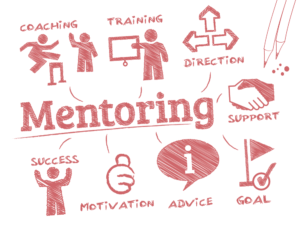So, you’re looking for a job.
You’ve spruced up your resume, dusted off your best interview clothes, and are actively engaging with your network to seek new opportunities.
The cherry on top is a 30- to 60-second elevator pitch you can jump into at a moment’s notice.
You never know when you’ll meet someone who might just offer a lifeline to a new opportunity—a potential hiring manager, HR executive, or former colleague who is looking to bring you back into the fold.
These are the moments you build towards, so when they happen, you want to nail the conversation—blowing any potential employers out of the water with a potted description of what you do and why you’re a good fit for their company.
Let’s take a closer look at how to craft this pitch, along with some of the common issues jobseekers face.
Why You?
The first step is to clearly define the benefits you’d bring to any company. It’s even easier than it sounds.
“I do A for B to achieve C.”
Of course, this forms the meat of your pitch it—the core of what you do and why you do it. If you can answer this question in 30 seconds, you’ll show your prospective employer why they might be interested in what you do. Whether it’s reducing costs, improving margins, generating sales, or training talent, clearly outlining the benefits you bring to your employer is a perfect way to start your pitch.
Tell a Story
Nothing is more boring than a typical, dull elevator pitch full of jargon that doesn’t actually capture what you do to someone outside your company.
Convoluted descriptions of the synergy you bring to corporate accounts overseas mean nothing to anyone who doesn’t do exactly the same thing as you.
To bypass the blank stares this can cause, tell a story.
In terms of your career choices, a story should do four things: define what you’ve done in the past, what you’re doing right now, what you want to do next, and why you want to do that.
Why did you become a marketing executive? What brought you to the industry? What have you accomplished in your current role and why are you considering leaving?
These are the relevant bits that any prospective employer cares most about, but they are often buried behind buzz words and ROI numbers that don’t carry the same weight.
Know Your Audience
Who you work with and why you work with them are just as important as what you do.
And yet these details can often fall to the wayside. Even if the job you’re gunning for doesn’t perfectly match up with your current role, find a way to incorporate it.
If you work primarily with large technical firms who sell to other businesses, there must be a reason for your choice—in other words, try to explain the driving force behind your chosen career path and the companies you engage with.
Your elevator pitch should accommodate all this so that potential employers are fully aware of why you want to work for them. The money, the benefits, the location—that stuff doesn’t matter. Employers want someone who is eager to work for them and has a good story and a clear purpose that matches their own. Tell that story and it will resonate with the people you have these conversations with.
Delivering the Perfect Elevator Pitch
This is where things get hard for many people.
Preparing an elevator pitch and having things in mind to say is easy enough, especially if you write it out and rehearse it. But the trick is to get people to take action.
What do you want someone to do after your pitch? Call you? Schedule a meeting? Provide more information?
Know what you want in these situations and make sure to end on a strong call to action. Make a short, simple ask of them that will require minimal action. Take the initiative in it as well. Don’t ask them to schedule a call—ask them if you can schedule a call. Make it clear that you are eager to take the next step and are willing to do what it takes to achieve this.
Keep it concise, simple, and direct, and always end strong with a next step.
The goal of a good elevator pitch is to capture someone’s attention, convey the most important details about what you do and why you do it, and walk away with clear next steps. It takes practice, but if you do it properly, you can make a lasting impression on potential hiring managers and future supervisors.




